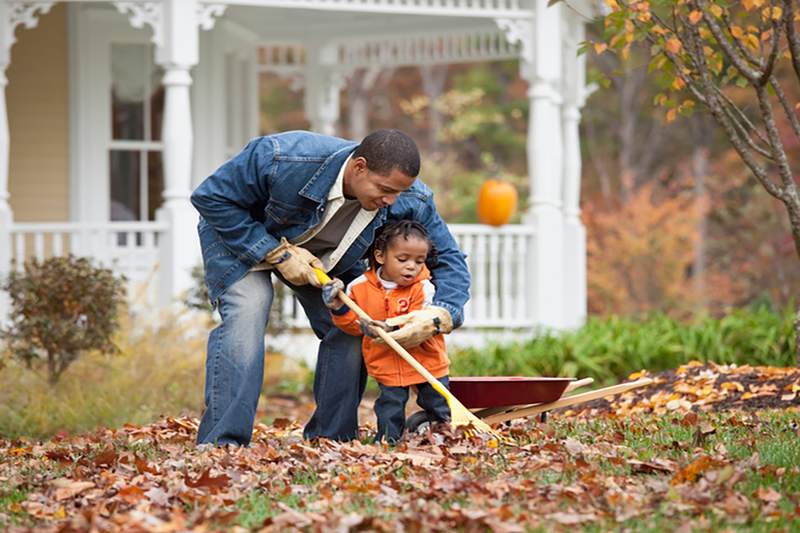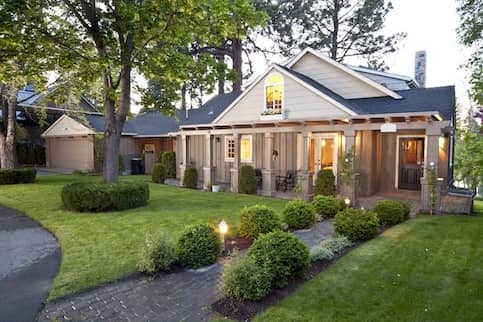The average down payment on a house may be lower than most people think. Read on to learn about the average down payment on a house – and the factors that influence it.
What Is The Average Down Payment On A House?
Many home buyers believe they’ll need to save 16% – 20% for a down payment on a mortgage. According to the National Association of REALTORS® (NAR), the average down payment for first-time home buyers in the USA was 6% in 2022. Repeat buyers, on the other hand, had a down payment of 17%.
NAR’s research also found that the highest the average down payment for first-time home buyers ever reached was 10%. However, the average down payment for repeat buyers has steadily increased. This is due to the increasing amount of equity most homeowners have today.
With steadily increasing home prices, repeat home buyers may be able to increase their average down payment, making it easier to secure attractive loan terms.
Find A Mortgage Today and Lock In Your Rate!
Get matched with a lender that will work for your financial situation.
What Is The Average Down Payment On A House For A First-Time Buyer?
The average down payment on a house for first-time home buyers was just 6% in 2022, with many first-time buyers citing difficulties saving for a down payment.
In a 2023 study, NAR found the most common obstacles to saving for a down payment are other expenses, which include high rent, student loan debt, credit card debt, car loans and child care costs.
First-time home buyers not only face the obstacle of not having a house to sell, buy many of them – especially millennials – also face the following challenges:
- Limited incomes
- Rising rents
- Health and medical costs
- Single or not married
- Bad credit
- High interest rates
See What You Qualify For
Buy A Home
Discover mortgage options that fit your unique financial needs.

Refinance
Refinance your mortgage to have more money for what matters.
Tap Into Equity
Use your home’s equity and unlock cash to achieve your goals.
Average Down Payment On A House By Generation
The median down payment for a home increases with home buyer age. This can be influenced by a number of factors including built up equity and higher income earnings.
Age Range | Median Down Payment Amount |
|---|---|
All Home Buyers | 13% |
23 – 31 | 8% |
32 – 41 | 10% |
42 – 56 | 15% |
57 – 66 | 21% |
67 – 75 | 28% |
76 – 96 | 30% |
Minimum Down Payment Requirements By Loan Type
A mortgage loan isn’t a one-size-fits-all solution. Some government-backed loans, like U.S. Department of Agriculture (USDA) loans and Department of Veterans Affairs (VA) loans, require zero down. There are also home loans that require down payments as low as 3% – 3.5%. No two borrowers have the same financing needs, and no two loan products have the same requirements.
Each loan type has a different down payment requirement and should play a role in your decision for mortgage financing. Before choosing a loan, make sure it fits your budget and that you aren’t strapping yourself for cash to meet the down payment requirements.
Loan Type | Down Payment Amount |
|---|---|
3% for first-time buyers and 5% for repeat buyers | |
3.5% with a 580+ credit score and 10% for credit scores between 500 – 579 | |
No down payment required | |
No down payment required | |
10.01% – 35%, depending on loan amount |
Why Do Home Buyers Put A 20% Down Payment On A Home?
Looking at the minimum down payment requirements, you might wonder why anyone would make a 20% down payment.
There are several reasons, but the largest is to avoid private mortgage insurance (PMI), which protects the lender if you default.
PMI is a temporary insurance that borrowers with a conventional loan must pay until they owe 80% of the home’s value. However, avoiding PMI isn’t the only reason buyers put 20% or more down on a house.
Some choose to make a larger down payment because it reduces the amount of money they have to borrow overall. As a result, they may have a lower monthly payment and help them save money on interest in the long run.
Whether putting 20% down is a good or bad idea is a personal decision, but there are some factors to consider.
Down Payment Examples
Let’s present a hypothetical, common situation. Taylor is ready to buy a house. They have $60,000 in their savings account and are interested in a $200,000 house. They know they can put down 20% ($40,000) and still have enough for the closing costs, which are usually 3% – 6% of the purchase price.
But Taylor’s thinking about their future. If they take that much from their savings, they know it will take a long time to build those funds again. They know that they’re taking on a new large mortgage payment but are not willing to drain their savings and end up in financial trouble if they end up losing their job or are somehow unable to work.
Taylor decides to put 10% down and keep some of their savings in their account for emergencies.
In a different common scenario, Jordan is also ready to buy a house. They have $100,000 in their savings account and want to buy a $200,000 home. Jordan confidently puts down 20% on the home and has enough money left in their savings to keep for an emergency, even after paying the closing costs.
Jordan can secure a lower interest rate and avoid PMI because they have more money saved. For Taylor, it didn’t make sense to put most of their money in their house and cause more financial stress than necessary. The PMI won’t last forever, and the reassurance of having money in savings was worth more in their situation.
Pros Of Putting 20% Down
There are advantages to putting 20% down on a home, including the following:
- Your mortgage payments will be smaller because you paid more up front. The less you borrow, the less you have to pay back.
- You’re likely to qualify for a better interest rate. The less money you borrow, the less risk you pose to a lender. This can allow you to get better rates and terms.
- You won’t have to pay PMI. With a 20% down payment, you don’t have to worry about paying PMI. This makes your payment even lower.
- You’ll start with higher equity in your home. The money you put down on your home gives you instant equity. This increases your net worth and means you’ll get more money in your pocket when you sell the home.
Cons Of Putting 20% Down
There are downsides to putting 20% down too, which is why it’s not for everyone. Here’s what to consider:
- You may end up paying more in rent while you save toward a down payment. It can take time to save 20% for a home. This could mean you spend more money on rent for longer than you anticipated.
- You could deplete your emergency fund. If you use all your savings, you won’t have money put aside for emergencies, which can cause financial issues.
- You’ll have less money to pay toward closing costs. If you only have 20% saved, you may have to ask your lender or seller to cover your closing costs.
Find A Mortgage Today and Lock In Your Rate!
Get matched with a lender that will work for your financial situation.
Common Sources To Pay For A Down Payment
It’s natural to think about the best way to budget for a down payment on a new home.
For most home buyers, their down payment is sourced from their savings. However, repeat and older home buyers are able to use the proceeds of their previous home sale for their down payment. Other common sources can include gift funds from family or friends and through the sale of their stocks or bonds, or inheritance.
Deciding What Down Payment Is Right For You
Choosing the right down payment is a personal decision. However, you should consider your budget, financial situation and what you’re comfortable with financially. Your real estate agent can also help guide you to what down payment amount is right for you based on local insights.
If you can’t put 20% down, you may still qualify for a loan, but will most likely pay PMI. If you can’t qualify, there are other options, including down payment assistance programs.
The key is not to stress yourself out financially just to make the illustrious 20% down payment, because it’s unnecessary. There are plenty of other ways to make your dream of homeownership happen.
The Bottom Line
Find the down payment that works best for you. Buying a house is one of the most significant investments you’ll make in your lifetime, so you want it to be something that makes you feel good.
Find A Mortgage Today and Lock In Your Rate!
Get matched with a lender that will work for your financial situation.

Sam Hawrylack
Samantha Hawrylack is a full-time personal finance and real estate writer with five years of experience. She has a bachelor's degree in finance and an MBA from West Chester University. She writes for publications like BiggerPockets, Angi, Well Kept Wallet, Crediful, Clever Girl Finance, AllCards, InvestingAnswers and many more.












